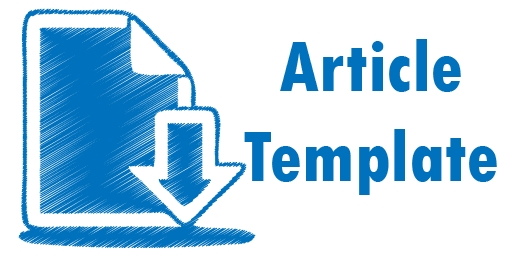Learning Design Project Based Learning Based on Chemical Literacy whit the Theme of Electrolyte and Non-Electrolyte Solutions
Abstract
In the 21st century, a learning design is needed that can increase the motivation and activeness of students in the learning process. The solution is to develop a project-based learning design based on chemical literacy. The purpose of this study was to develop and determine the level of validity of the project based learning design based on chemical literacy with the theme of electrolyte and non-electrolyte solutions. The type of research is educational design research using the plomp model and data processing using the Aiken's V formula. The validity test for the learning design is carried out by distributing instruments in the form of content validity questionnaires and construct validity questionnaires which are categorized as valid.References
Aiken, L. R. 1985. Three Coefficients For Analyzing The Reabilty And Validity of Ratings. Educational and Psychological Measurement, 45, 134.
Dewi, R., Supriyanti, F, M, T dan Dwiyanti, G. 2016. Analisis Penguasaan Konsep Laruta Elektrolit dan Non Elektrolit Siswa Menggunakan Siklus Belajar
Grant, Michael M. 2002. Getting A Grip On Project Based Learning Theory, Casses and recommendations. Meridin A Middle School Computer Technologies Jurnal a Service of NC State University, Vol 5 Issue 1.
Kementrian Pendidika dan Kebudayaan RI. 2020. Asesmen Kompetensi Minimum (AKM).
Maudi, Nadea. 2016. Implementasi Project Based Learning Untuk Meningkatkan Kemampuan Komunikasi Matematika Siswa. Jurnal Pendidikan Matematika Indonesia. Vol. 1, No. 1, hal 39-uan Komunikasi Matematika Siswa. Jurnal Pendidikan Matematika Indonesia. Vol. 1, No. 1, hal 39-43.
Eliza, Wirna & Yusmaita, Eka. 2021. Pengembangan Butir Soal Literasi Kimia pada Materi Sistem Koloid Kelas XI IPA SMA/MA. Jurnal Eksakta Pendidikan, 5 (2).
Ozer, Ozgur, Ayylidiz, Ismail and Esch, Nickola. 2015. Project-Based Learning in a World Focused on Standards. A. sahin (Ed), Apractice-Based Model of STEM Teaching. 63-73. Sense Publishers.
Permendikbud Nomor 37 Tahun 2018. Kompetensi inti dan kompetensi dasar pelajaran pada kurikulum 2013 pada pendidikan dasar pendidikan menengah.
Plomp, Tjeerd & Nieveen, Nienke. 2007. An Introduction to Educational Design Research. Shanghai: East China Normal University.
Plomp, T. & Nieveen. N. (2013). Education Design Research. National institue for Curriculum Development(SLO).
Rahayu, Sri. 2017. Mengoptimalkan Aspek Literasi Dalam Pembelajaran Kimia Abad 21. Jurusan Kimia FMIPA Universitas Negeri Malang.
Raub L., dkk. 2017. Investigating Chemical Literacy Achievement among High Achiever Students in Malaysia. American Scientific Publichers.
Rusilowati, Ani, dkk. 2017. Pengaruh Pembelajaran Berbasis Proyek Terhadap Kemampuan Literasi Sains Siswa. Pancasakti Science Education Journal, 2(2), 114-124.
Sartika, A. Y. M., & Yusmaita, E. 2020. Pengembangan Asesmen Literasi Kimia pada Materi Hukum-Hukum Dasar Kimia dan Stoikiometri. Edukimia Jurnal. 2(3).
Shaleha, Ummi, dkk. 2020. Pengembangan lembar kerja peserta didik elektronik (E-LKPD) berbasis literasi sains pada materi pencemaran lingkunga. EduChem Jurnal, Vol 1, No 1.
Shwartz, Y., Ben-Zv, R., & Hofstein, A. (2005). The importance of involving high-school chemistry teachers in the process of defining the operational meaning of ‘chemical literacy.’ International Journal of Science Education, 27(3), 323–344.
Shwartz, W., Ben-Zvi, R., dan Hofstein, A., 2006, The Importance of Involving High School Chemistry Teacher in the Process of Defining The Operational Meaning of‘Chemistry Literacy’. International Journal of Science Education, Vol 27, No.3, Hal 323—344.
Suhanda, & Suryanto, Sugeng. 2018. Penerapan pembelajaran kimia berbasis proyek untuk meningkatkan keterampilan proses sains siswa kelas X SMA Negeri 2 Purworejo. Jurnal Inovasi Pendidikan Kimia, Vol 12, No. 2.
Sutirman. 2013. HandBook: Media dan Model-Model Pembelajaran Inovatif Edisi Pertama. Yogyakarta: Graha Ilmu.
The George Lucas Educational Foundation. 2005. Instructional Module Project Based Learning. Tersedia:http://www.edutopia.org/modules/PBL/whatpbl.php
Copyright toward articles published by Entalpi Pendidikan Kimia is hold by Entalpi Pendidikan Kimia. In the other side, Entalpi Pendidikan Kimia also applied CC Attribution 4.0 which means you could 1) share — copy and redistribute the material in any medium or format; and 2) adapt — remix, transform, and build upon the material; for any purpose, even commercially. As long as you give us attribution — You must give appropriate credit, provide a link to the license, and indicate if changes were made. You may do so in any reasonable manner, but not in any way that suggests the licensor endorses you or your use. Entalpi Pendidikan Kimia also applied Open Access toward each published articles, so the published content will be available freely for public.





